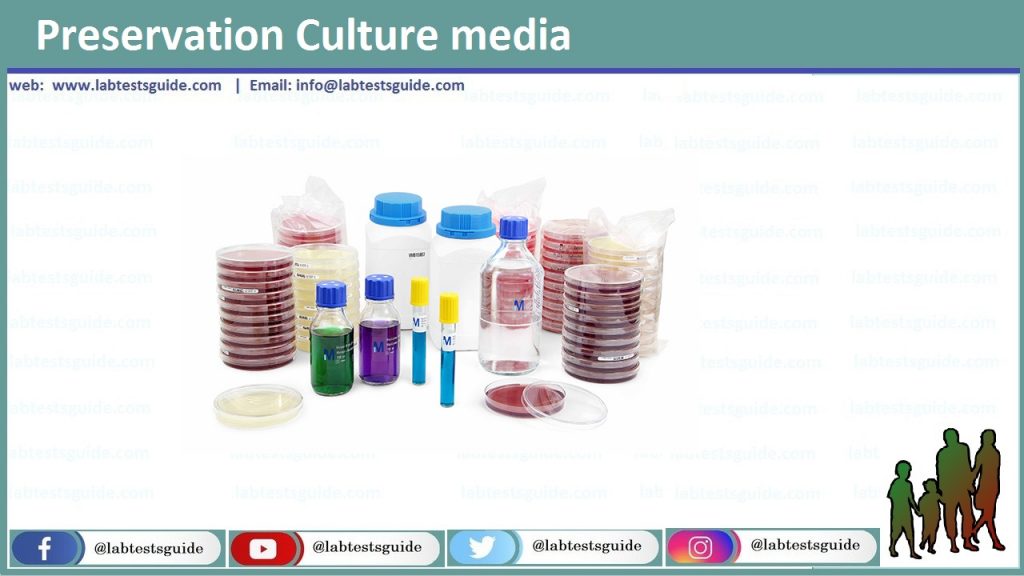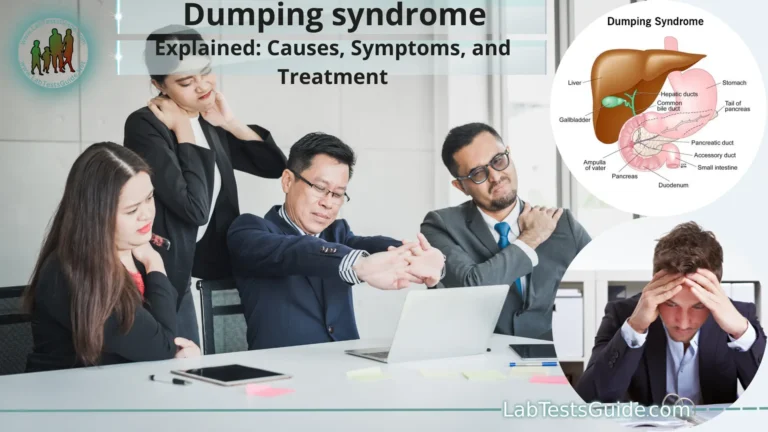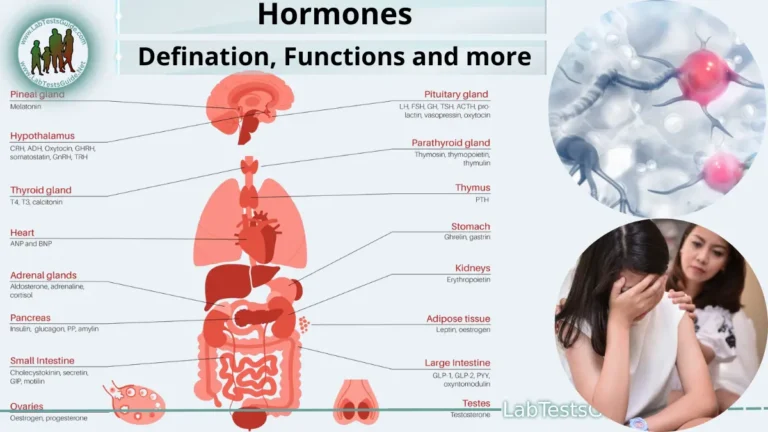Preservation culture media are nutrient-rich formulations used to store and maintain the viability of microorganisms for extended periods, ensuring their long-term preservation and availability for future use in laboratory settings or culture collections.
The main purpose of this crop is to allow these microorganisms to grow safely in a safe environment that contains all important nutrients and protect them from environmental damage so that these organisms can be used when needed.

Types of Culture Media :
There are some types of important culture or growth media used in microbiological laboratories:
- The Preservation Culture Media:
Preservation culture media are nutrient-rich formulations used to store and maintain the viability of microorganisms for extended periods, ensuring their long-term preservation and availability for future use in laboratory settings or culture collections. - The Enrichment Culture Media:
These media contain additional nutrients that are designed to support the growth of fastidious microorganisms. They may also contain growth factors that are essential for the growth of certain organisms. Examples of enriched media include blood agar, chocolate agar, and thioglycollate broth. - Selective Culture Media:
These media contain substances that inhibit the growth of unwanted microorganisms, allowing only the desired organisms to grow. Selective media are often used to isolate specific bacteria from a mixed culture. Examples of selective media include MacConkey agar, Mannitol salt agar, and Eosin methylene blue (EMB) agar. - Differential Culture Media:
These media contain substances that allow the differentiation of different types of microorganisms. Differential media typically contain a pH indicator that changes color in the presence of certain metabolites. Examples of differential media include Triple Sugar Iron (TSI) agar, Kligler’s Iron Agar (KIA), and Simmons citrate agar. - Resuscitation Culture Media:
Resuscitation culture media are used to help revive bacteria that have been stressed or injured by environmental factors. These media typically contain nutrients and growth factors that can help promote the recovery and growth of bacterial cells. - General Purpose Media:
These media are designed to support the growth of a wide variety of microorganisms. They are typically made with a simple nutrient formulation that includes a source of carbon, nitrogen, and energy. Examples of general-purpose media include nutrient broth, nutrient agar, and peptone water. - Transport media:
These media are designed to preserve the viability of microorganisms during transport to a laboratory. Transport media typically contain nutrients and a buffering agent that help to protect the microorganisms from environmental stresses. Examples of transport media include Stuart’s transport medium and Amies transport medium. - Anaerobic media:
These media are designed to support the growth of anaerobic microorganisms. Anaerobic microorganisms require an oxygen-free environment to grow. Anaerobic media typically contain a reducing agent that removes oxygen from the medium. Examples of anaerobic media include Robertson’s cooked meat medium and Thioglycolate broth.
Overview of Preservation Culture Media :
Culture is a living thing. It is constantly evolving and changing, but it is also fragile. Without careful preservation, our cultural heritage can be lost forever. This is especially true for media, which can be easily damaged or destroyed.
There are many different ways to preserve culture and media. Some of the most common methods include:
- Digitization: This involves converting physical media into digital files, which can then be stored on computers or other devices. Digitization is a great way to preserve media that is in danger of deteriorating, such as old films or photographs.
- Archiving: This involves storing media in a safe and secure environment. Archives are often housed in libraries, museums, or other institutions that are dedicated to preserving cultural heritage.
- Restoration: This involves repairing damaged or deteriorated media. Restoration can be a complex and time-consuming process, but it can help to preserve media that would otherwise be lost.
In addition to these traditional methods, there are also a number of new technologies that can be used to preserve culture and media. For example, 3D printing can be used to create physical copies of objects that are in danger of being lost. Virtual reality can also be used to create immersive experiences that allow people to learn about different cultures and time periods.
The preservation of culture and media is an important task. It helps us to understand our past, connect with our present, and imagine our future. By preserving our cultural heritage, we are ensuring that it will be available for future generations to enjoy.
The Importance of Preservation
There are many reasons why it is important to preserve culture and media. Some of the most important reasons include:
- To safeguard our cultural heritage: Our cultural heritage is a precious resource. It contains the stories of our past, the insights of our present, and the hopes and dreams of our future. By preserving our cultural heritage, we are ensuring that it will be available for future generations to learn from and enjoy.
- To protect our history: Our history is not just a collection of dates and events. It is also a collection of stories, songs, and images. These stories, songs, and images help us to understand our past and to connect with our ancestors. By preserving our history, we are ensuring that it will not be forgotten.
- To promote understanding and tolerance: Culture and media can help us to understand different cultures and time periods. By learning about other cultures, we can develop a greater understanding and tolerance for people who are different from us. This is especially important in today’s world, where we are increasingly interconnected.
- To inspire creativity: Culture and media can inspire creativity. They can give us new ideas and new ways of seeing the world. By preserving culture and media, we are ensuring that they will be available to inspire future generations of artists, writers, and thinkers.
The Challenges of Preservation
While the importance of preservation is clear, there are a number of challenges that must be overcome in order to preserve culture and media. Some of the most significant challenges include:
- The cost of preservation: Preservation can be expensive. This is especially true for large-scale projects, such as the digitization of libraries or archives.
- The lack of resources: There are not enough resources available to preserve all of our cultural heritage. This is especially true for endangered cultures and languages.
- The lack of public awareness: Many people are not aware of the importance of preservation. This can make it difficult to raise the funds and support that are needed for preservation projects.
The Future of Preservation
Despite the challenges, there is reason to be optimistic about the future of preservation. New technologies are emerging that can help to make preservation more affordable and accessible. In addition, there is a growing public awareness of the importance of preservation. This is leading to increased support for preservation projects.
The future of preservation is bright. With continued effort, we can ensure that our cultural heritage will be preserved for future generations to enjoy.
Conclusion
The preservation of culture and media is an important task. It helps us to understand our past, connect with our present, and imagine our future. By preserving our cultural heritage, we are ensuring that it will be available for future generations to learn from and enjoy. There are a number of challenges that must be overcome in order to preserve culture and media, but there is also reason to be optimistic about the future. With continued effort, we can ensure that our cultural heritage will be preserved for future generations to enjoy.thumb_upthumb_downtuneshareGoogle it
Possible References Used






5 Comments